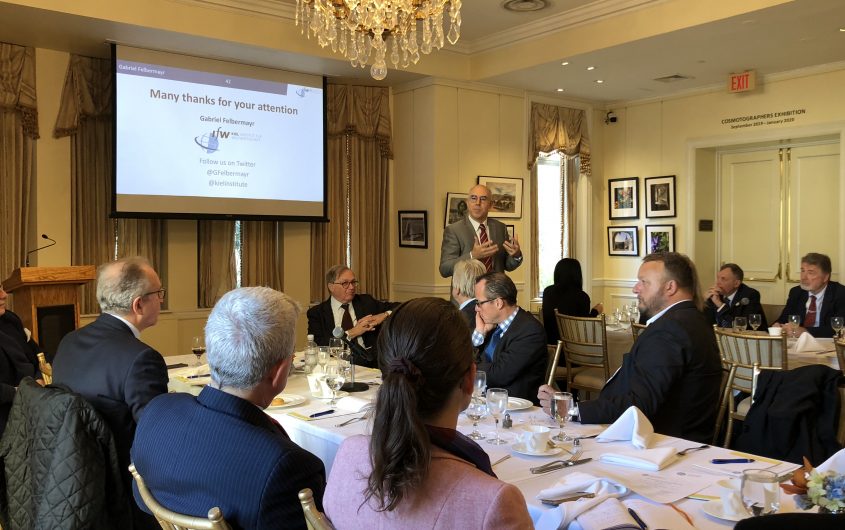
The United States, Germany, and Global Trade: Renewal or Reversal?
Event Summary
On November 15, 2019 Gabriel Felbermayr, President of the Kiel Institute for the World Economy, presented his views on “The United States, Germany, and Global Trade: Renewal or Reversal?” as part of the Allianz Geoeconomics Speaker Series.
Professor Felbermayr focused on four key themes: a new era of “slowbalization,” the China problem, the state of play in transatlantic trade, and the prospects for a new multilateralism.
“Slowbalization.” The hyperglobalization that characterized the period from 1990-2008, made possible by the creation of the World Trade Organization in 1995, the benevolent stewardship of a U.S.-led “Pax Americana,” and the fragmentation of production into global value chains, has experienced a marked slowdown since the onset of the financial crisis. Since 2008, trade has no longer been growing at a faster rate than overall GDP, in part owing to a shortening of production chains as countries repatriate parts of the manufacturing process. Although goods trade and foreign investment have slowed, services—especially digital services—trade is booming.
The China problem. Germany and the United States have experienced the rise of China in quite different ways. While U.S. exports of goods and services to China constitute less than one percent of GDP, in Germany they are more than 3.5 percent of its GDP. The U.S. runs a large current account deficit with China, while Germany has a surplus with China. China has more to lose from the current trade tensions with the U.S. and the tariffs and counter-tariffs that have been imposed. Both Germany and the EU stand to gain from such a face-off.
The State of Play in Transatlantic Trade. Because of the EU single market, as well as for tax reasons, a considerable amount of German trade with the U.S. is booked in the Netherlands, Ireland, or other countries. That means it is not the U.S.-German bilateral trade relationship that matters but rather the broader U.S.-EU relationship. While the EU maintains a surplus with the U.S. in goods, if services and primary income (profits on investments) are taken into account the U.S. runs a small surplus with the EU. Outside of metals like steel and aluminum—which have been subject to U.S. tariffs since 2018—it is hard to discern a negative “Trump effect” on transatlantic trade.
A New Multilateralism? The WTO is in “an existential crisis” owing to its heterogeneous membership and inflexible way of working based on consensus. It is feeling the effects of the coexistence of economic convergence and political divergence between some of its major members (especially the U.S. and China). Since the world needs rules for trade, the WTO could learn from the EU’s experience and move to a core-periphery model for global trade governance. The core would consist of democratic, liberal market economies while the periphery would include countries with non-market economies and illiberal autocracies.










